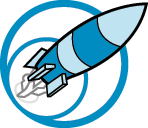Ethan's Monologue
My phone is ringing…
“Hello?”
(...)
“Okay..”
I’m really not hungry right now. I was actually focused on this project. By the time I get back from dinner, I’m not gonna wanna code anymore.
*Walks downstairs*
Ugh, she got those nasty chicken fingers from ACME. They’re so dry.
(...)
Why does she care about school? She doesn’t care about me in the first place.
“It was just a normal day”
(...)
“I was hanging out with friends. I only got home at like 5:30”
(...)
“James and Raul”
(...)
“How do you not know who I’m talking about. I mention them all the time.
(...)
“Why wouldn’t I hang out with other kids? I don’t need to join a club just because other kids do.”
(...)
“Okay, but I like the friends I have.”
(...)
“Why…”
(...)
“I do have a life and I do have friends. Why can’t you just be positive sometimes?”
*mom leaves room*
Ugh why can’t I just enjoy being myself?
Maybe I should try to spend the night with James tomorrow.
*logs into his mother’s facebook*
SHE SAID THAT I SAID I HATE HER??
Why does she make stuff up about me? What did I ever do to her? No wonder all of her friends ask me so many questions. She doesn’t seem to care about me herself.
Who should I talk to?
Will my dad listen? Will my brother listen?
I don’t think they will understand. I feel like something is wrong. None of my friends ever mention them feeling bad about themselves. Nor do I, but still. My friends are always posting pictures with their parents having a good time. I never post anything of my or my family. It just doesn’t seem right. I don’t want people to judge me. What if my brother makes fun of me for talking to him about it? If my mom knows that I talked to somebody about her, she might get mad.
I fell asleep…
(2 hours later)
Maybe I should just take a break. My grandmother won’t judge me. I know she can keep it to herself. She always asks how I’m doing. I always respond with “good” or “fine”. Fine means that I’m just not loving school. I never relate it to life at home. I’m sure she’ll understand.
*calls his grandmother*
“Hello?”
(...)
“Hey Grandma!”
(...)
“Yea uh… Like, do you think I could see you soon? L..”
(...)
“Like alone?”
(...)
“Yea I just really want to see you alone if that’s okay”
(...)
“Could I come over this weekend?”
(...)
“Yea 1 hour is fine. I’ll get myself there.”
(...)
“Okay bye bye! I love you!”
(...)
Oh no!
I hope she understood that I was really nervous. She might ask my mom if something is wrong. If I call her back, she will be worried.
Maybe it isn’t me at all. Maybe my mom is going through something. What could have happened? Her dad passed away 3 years ago now. She didn’t even like him. At least that’s what she told us. She quit her job last week. That was her choice wasn’t it? Maybe I should just go talk to her
